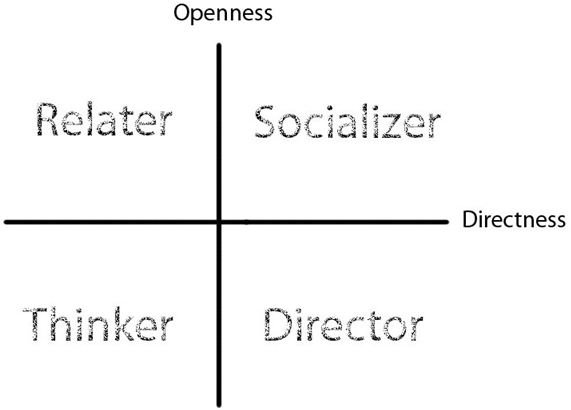Understanding Individual Styles and Their Role in Change Management: Accommodating Different Personalities and Communication Styles in Managing Change Initiatives
Change in an organization may be inevitable, but that does not mean it should not be undertaken with a goal of minimizing upset for employees in a personal and a business sense. One way of improving change management efforts is to create a plan to accommodate different personal styles when working with a group of diverse individuals.
As an example, one framework for establishing individuals’ primary styles is the Platinum Rule behavioral style assessment. Individuals taking the assessment are assigned to one of four categories based on their responses: Socializer, Relater, Thinker or Director. The styles differ along two parameters: the extent of directness vs. indirectness and the extent of openness vs. non-openness. As with all assessments, individuals should be aware that their style type is a reflection of their primary style and does not indicate that they always act as a prototypical example of that group or are completely alike compared to peers with the same style.

In general, Socializers are open and direct, Relaters are open and indirect, Thinkers are less open and indirect, while Directors are less open and direct. Socializers tend to be expressive and enthusiastic and appreciate relationships even in a business setting. Relaters are very focused on interpersonal relationships and are likely to be conflict-averse. Thinkers are very systematic and analytical and prefer to have lots of data and time for decision making. Directors work at a fast pace, are not averse to conflict and prefer to keep social conversations out of the business setting.
So how would employees with each of these styles react to change in the work environment? What can leaders to do ensure the smoothest possible implementation of new processes, policies and philosophies?
For starters, just acknowledging that people are not all the same and do not respond to change the same way can go a long way in helping a business leader make sound decisions about communicating and implementing change. Directors are likely to respond best to a brief outline (whether written or spoken) explaining what is changing and why. Thinkers, however, will be uncomfortable if they are not given detailed information about what is happening, why it is happening, and when and how it will happen and if they are not given enough time to prepare mentally and physically.
Socializers and Relaters will be concerned about the impact of change on other employees and on the overall culture and business environment. They will expect to have their own personal concerns addressed through an outlet for feedback and discussion. Relaters will especially appreciate any effort their managers take to help them understand how the change will impact them and that while change is necessary, an attempt has been made to take the impact on people into account.
Of course the timing of announcements about changes can not always be set in a way that will satisfy the needs of all individuals. But even making an effort to communicate in ways that work for different styles can help smooth the rough spots. Holding a discussion session where those who prefer personal interaction (Relaters and Socializers) can discuss the changes with leaders and each other can be complemented by written communication, both in bullet point form for Directors and in detailed text form for Thinkers.
For additional information:
